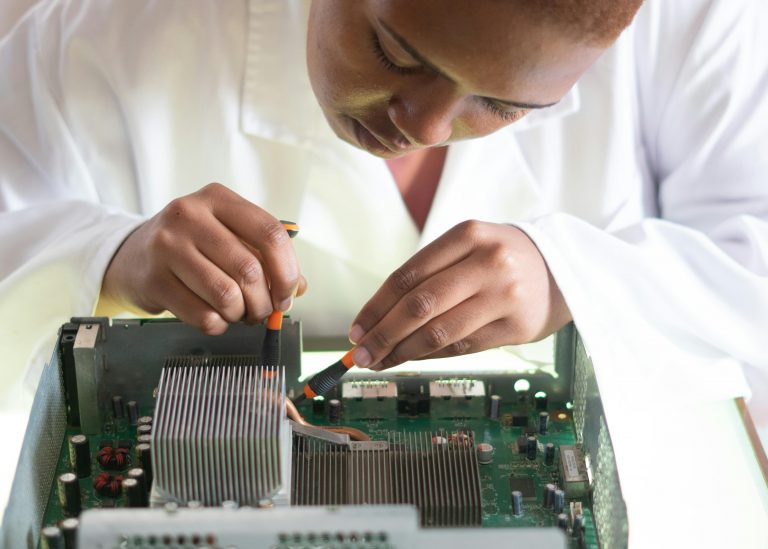Setup and Optimize the National Instruments PXI-5441 Waveform Generator
The National Instruments PXI-5441 is a powerful PXI waveform generator designed to support high-speed waveform downloads up...


The PXI (PCI eXtensions for Instrumentation) and SCXI (Switch, Control, and Measurement Systems) systems are modular platforms used in automated test and measurement applications. Both systems were created to optimize the integration of various test instruments. However, each module is designed with its own specialties and unique characteristics. In this guide, we will assess the main differences between PXI and SCXI, such as system compatibilities, software, and signal conditioning. Whether you’re an experienced engineer or new to using test equipment, understanding these differences will help you optimize your testing setups and achieve accurate results.
PXI and SCXI systems greatly differ in terms of form factors and equipment compatibility. PXI, based on the PCI bus standard, uses a small, modular chassis that typically comes in a 3U height (U refers to a rack unit, equal to 1.75 inches). This unit may house several instruments in a single enclosure. With this specific modular design, test setup flexibility and easy scalability are made possible. In addition, PXI modules generally allow cross-platform interoperability with a range of PXI chassis from different vendors.
SCXI is built with a more conventional rack-and-stack architecture and modules installed in separate enclosures that fit into ordinary 19-inch racks. The most common use of SCXI modules are integration with other SCXI modules or standalone use, though they can be integrated with PXI systems with the right adapters. This compatibility and form factor difference affects how simple it is to integrate and configure the system to meet various testing needs.
The PXI and SCXI performance capacities and available options for signal conditioning represent another important distinction between the two modules. PXI modules are well-known for their sophisticated signal processing capabilities, high-speed data collecting, and precise measurements. These modules also include built-in signal conditioning circuitry, such as amplifiers, filters, and digitizers, that is tailored for particular measurement purposes. By integrating signal conditioning components, users can simplify the setup process while improving accuracy and dependability.
On the other hand, SCXI modules provide a greater variety of options for signal conditioning. Yet, in order to get comparable performance levels as PXI modules, external signal conditioning modules are typically needed. Although this modular offers flexibility in customizing signal conditioning to meet particular needs, it may result in higher setup, calibration costs, and complexity for the system.
Another area where PXI and SCXI systems differ is in their software and programming environments. PXI systems often work with industry-standard software development tools, such LabVIEW, which offer extensive support for data collecting, analysis, and instrument control. With their comprehensive libraries of pre-built functions and user-friendly graphical programming interfaces, these software packages facilitate the quick development and implementation of test programs.
In contrast, instrument control and data analysis in SCXI systems will typically depend on general-purpose programming languages like C/C++ or MATLAB. Compared to using graphical programming environments like LabVIEW, this method gives more flexibility and control over programming activities, but it may also take more time and experience to design and maintain test software. As a result, the user’s preference for software development environments and level of programming language experience will also influence their decision between PXI and SCXI. It’s important to remember that PXI systems can also be used with graphical programming environments other than just LabVIEW, such as NI VeriStand.
Scalability, performance, or programming flexibility can be given priority, and both PXI and SCXI provide effective solutions for a broad range of testing requirements across several industries.
Apex Waves is your leading distributor in legacy test equipment! Check out our website to see what’s in stock or contact us to receive a quote.
When it comes to test equipment, PXI and SCXI systems offer two different ways to get accurate and dependable readings. In this blog post, we have discussed the differences between these two systems in regards to form factor, software environments, compatibility, performance, and signal conditioning. While SCXI offers versatility in programming languages and signal conditioning options, PXI provides modular scalability, high-speed data collecting, and exceptional interface with applications like LabVIEW.
The decision between PXI and SCXI ultimately comes down to your specific testing needs and level of experience with software development tools. By considering these factors, you can choose the test equipment that best meets your demands, guaranteeing reliable results and effective testing procedures.
Curious to learn more about obsolete instruments, their uses, and defining qualities? Read our blog for more on trending topics, how-to guides, and other information that will make you a legacy test equipment expert.
Shop National Instruments PXI products here
A monthly email packed with valuable content—industry news, tutorials, obsolescence updates, and more. No sales pitches, just insights we think you'll find helpful!
The National Instruments PXI-5441 is a powerful PXI waveform generator designed to support high-speed waveform downloads up...
Companies in almost every industry are being transformed by artificial intelligence, and autonomous machines are...
The PXIe Platform from National Instruments offers an incredibly valuable toolset for test and measurement innovation. Its...
It is no secret that simulation and testing is an important part of designing circuits....